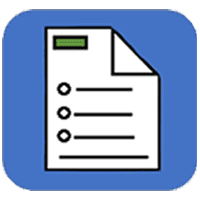Fact Sheet / Brief
View factsheet.
This brief summarizes a recent study that assessed factors driving perceived defensibility through the lens of wildland firefighters to learn more about how they evaluate the risks associated with different structures. It provides insight into structure defensibility in action, and the factors that firefighters may consider when they engage a fire near structures.
View factsheet.
When we talk about wildfire fuel, we don’t mean gasoline or diesel. The term fuel refers to both dead and living vegetation that can burn, as well as homes and other structures that can ignite. This is particularly important in areas where urban development meets the natural environment, known as the wildland urban interface (WUI). Wildfires are becoming increasingly destructive across many ecosystems, including forests, woodlands, and rangelands. Climate change, human-caused ignitions, the encroachment of homes into the natural environment and the volume, density and health of fuel on the landscape all contribute to this escalating problem. In this fact sheet, we will explore some different “tools in the toolbox” for managing fuel in Nevada.
View factsheet.
In recent years, biochar has become a way to dispose of woody debris from forest activities. A new General Technical Report (GTR) has been published by the Rocky Mountain Research Station covering the eight types of biochar production available to land managers. This product will help increase the use of biochar and provide resources to inform those who are interested in it.
View article and brief.
Fire is strongly linked to outdoor recreation in the United States. Recreational uses of fires, whether in designated campgrounds or the backcountry, include warmth, cooking, and fostering a comfortable atmosphere. However, through inattention, negligence, or bad luck, recreational fires sometimes ignite wildfires. This paper evaluates whether the density of wildfire ignited by recreation or ceremony on U.S. Forest Service lands, and the size of such wildfires, is influenced by proximity to designated campgrounds, visitor density, previous and current drought conditions, and the type of vegetation surrounding the ignition point.
View factsheet.
We assessed whether issuance of Red Flag Warnings (RFWs) was associated with the number of human-caused wildfires and the probability of an ignition becoming a large wildfire (100 or more acres) across the western United States from 2006 through 2020. This information allowed us to examine the extent to which RFWs may reduce the number of human-caused wildfire ignitions.
View article and brief.
Although fuels treatments are generally shown to be effective at reducing fire severity, there is widespread interest in monitoring that efficacy as the climate continues to warm and the incidence of extreme fire weather increases. This paper compared basal area mortality across adjacent treated and untreated sites in the 2021 Dixie Fire of California’s Sierra Nevada.
View (and/or order) the poster.
Sagebrush ecosystems, broadly distributed across western North America (see map), are imperiled due to a combination of modern and historical factors causing widespread degradation and habitat loss. Sagebrush shrubs are so common in these ecosystems that they create a “sea” across the landscape. This poster highlights wildflowers (forbs) common in sagebrush vegetation of the Great Basin.
These wildflowers support countless wildlife species, including some species only found in sagebrush ecosystems, such as the greater sage-grouse. (See “High sage-grouse value.”) Many forb species (including most featured here) are highly valued and used for food, medicine and ceremony by the many Indigenous peoples of the Great Basin. There are hundreds of forb species in sagebrush ecosystems, all with their own unique characteristics. The 31 species on this poster highlight common species potentially useful in restoration. These species also represent the variety of size, height, flowering timing and taxonomy (evolutionary relationships) found in typical sagebrush communities. Note: These species rarely, if ever, occur as closely together as shown in this poster.
View brief.
The word “risk” is often used informally to talk about feelings of danger or chances of loss. When communicating about wildfire risk, both inside the Forest Service and with the public and others, careful and intentional use of the term “risk” is more likely to increase shared understanding of all involved. What does “risk” mean? How is risk measured? How can wildfire risk be reduced? Can wildfire risk be eliminated? Here, we share definitions of risk in a technical sense, consistent with how the insurance industry considers risk. We focus mainly on wildfire risk related to communities, and how that risk can be reduced.


